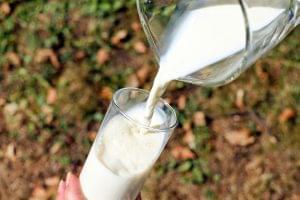Fresh milk sales have turned into losses – GVH graph highlights
A new and previously overlooked issue has come to light in Hungarian retail: the sale of fresh (ESL) milk has now clearly become loss-making. According to an analysis published last week by the Hungarian Competition Authority (GVH), retailers are not only failing to profit from this product category, but are losing money on every liter sold.
Margins Increased, Profits Vanished
 According to a chart published by the GVH, in 2019, stores realized a gross margin of HUF 50.5 per liter of 2.8% ESL milk, of which HUF 6 was actual profit. By 2024, the margin had risen to HUF 80 per liter, but this was still not enough: stores incurred a loss of HUF 14.1 per liter.
According to a chart published by the GVH, in 2019, stores realized a gross margin of HUF 50.5 per liter of 2.8% ESL milk, of which HUF 6 was actual profit. By 2024, the margin had risen to HUF 80 per liter, but this was still not enough: stores incurred a loss of HUF 14.1 per liter.
The main reason lies in significantly increased operational costs: labor expenses rose by more than 60% over five years, from HUF 27 to HUF 43.8 per liter. Energy costs almost tripled over the same period, and neither the price caps nor inflation-adjusted pricing were able to offset the rising expenditures.
Low-Fat Milk Performs Even Worse
The trend applies not only to 2.8% milk. For 1.5% ESL milk, the balance already tipped into the negative in 2023—meaning that stores had already recorded losses per liter a year earlier. This indicates that there was even less room to increase margins for reduced-fat products, despite rising production and operating costs.
The Risk Grows – Could Fresh Milk Disappear from Shelves?
GVH data also highlights that fresh ESL milk has become one of the most sensitive products for retail chains. Since milk is perishable, requires refrigeration, and is labor- and energy-intensive, its sale under increasing cost pressure is not just low-margin but outright uneconomical. The question is how long this loss-making business can be sustained—especially for smaller stores.
Although it has so far been strategically important for stores to keep essential food items such as milk on the shelves, if current trends continue, the supply of ESL milk may narrow in the future. This could pose new challenges for consumers, producers, and all players in the supply chain alike.
Related news
The GVH imposed a total fine of 22 million forints on the Czech company operating the Rondogo website
🎧 Hallgasd a cikket: Lejátszás Szünet Folytatás Leállítás Nyelv: Auto…
Read more >Milk market tensions: the Minister of Agriculture posted about the government’s steps
🎧 Hallgasd a cikket: Lejátszás Szünet Folytatás Leállítás Nyelv: Auto…
Read more >The GVH imposed fines of more than 3.7 billion forints on 29 companies in 2025
🎧 Hallgasd a cikket: Lejátszás Szünet Folytatás Leállítás Nyelv: Auto…
Read more >Related news
Circular transition more urgent than ever
🎧 Hallgasd a cikket: Lejátszás Szünet Folytatás Leállítás Nyelv: Auto…
Read more >Ads Interactive Media Group will sell the retail media platforms of Auchan Hungary Kft. stores from 2026
🎧 Hallgasd a cikket: Lejátszás Szünet Folytatás Leállítás Nyelv: Auto…
Read more >Foxfilm teaches entrepreneurs how to make videos
🎧 Hallgasd a cikket: Lejátszás Szünet Folytatás Leállítás Nyelv: Auto…
Read more >







